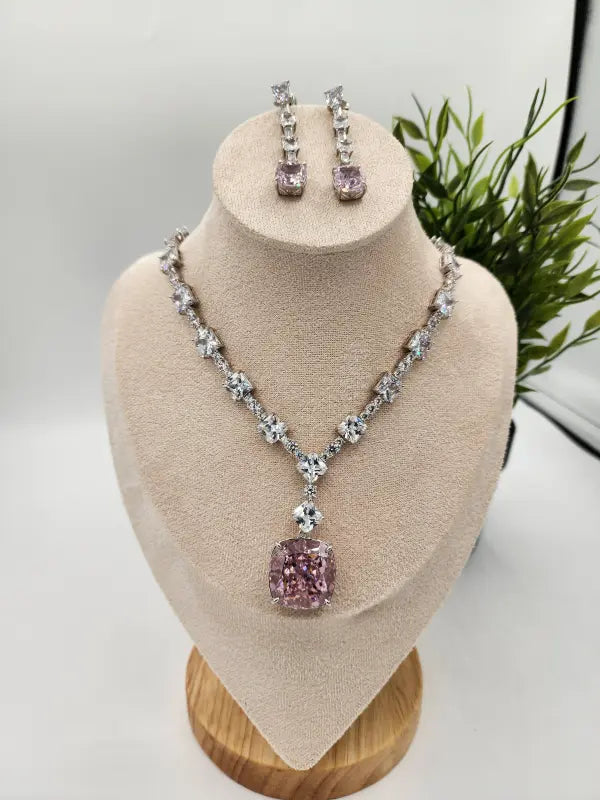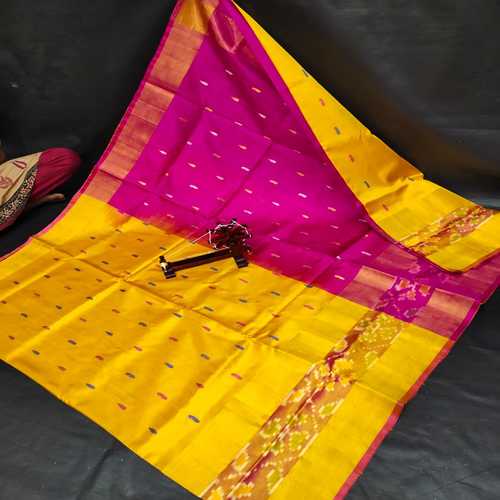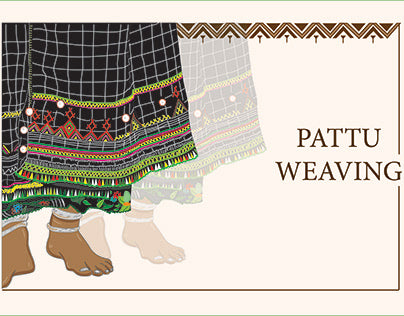Uppada silk, a cherished fabric from the seashore town of Uppada in East Godavari, Andhra Pradesh, is a testament to India’s rich textile heritage. Known locally as Uppada Pattu, these silk saris stand out due to their exquisite craftsmanship and unique weaving techniques. Made using the traditional Jamdani method, Uppada silk saris are a blend of historical artistry and modern elegance.
The Jamdani Weaving Technique
The Jamdani weaving technique, which dates back to ancient times, is central to the creation of Uppada silk saris. This technique, renowned for its intricate patterns and delicate craftsmanship, was historically prominent in Bengal. However, the Industrial Revolution in England led to a decline in the Jamdani art form during the 19th century. It was only in the 20th century that Jamdani began to see a revival.
In 1988, this traditional technique was introduced to Uppada, merging with the local weaving traditions of Andhra Pradesh. This introduction marked a new chapter in the evolution of Uppada silk, blending classic Jamdani patterns with regional influences. Despite its early struggles, the craft of Uppada silk saris gradually gained recognition and acclaim over the next decade.
Unique Features of Uppada Silk Saris

Uppada silk saris are distinguished by their intricate designs and the fine quality of silk used. One of the notable aspects of these saris is their use of cotton warp, which adds a unique texture and durability. The weaving process involves a length count of 100 and a breadth count of 100 threads, contributing to the fabric’s distinctive appearance.
The artisans also incorporate extensive zari work, which enhances the sari’s elegance with shimmering patterns. This intricate detailing adds a layer of luxury to the fabric, making Uppada silk saris highly sought after for special occasions and ceremonial events.
The Craftsmanship Behind Uppada Silk
Creating an Uppada silk sari is a meticulous process that demands exceptional skill and patience. The weaving process is entirely manual, with no mechanical assistance, which allows the weavers to maintain the high quality and unique patterns of the fabric. Each sari involves a considerable amount of time and effort, reflecting the dedication of the artisans who uphold this traditional craft.
The patterns on Uppada silk saris are inspired by various motifs and designs that have cultural significance. These designs are carefully woven into the fabric, resulting in intricate and beautiful patterns that are both timeless and contemporary.
The Evolution and Popularity of Uppada Silk
From its introduction in Uppada in 1988 to its rise in popularity over the next decade, Uppada silk has become a symbol of cultural heritage and artistic excellence. The fusion of the Jamdani technique with local traditions has created a unique textile that resonates with both traditional and modern aesthetics.
Today, Uppada silk saris are celebrated for their beauty and craftsmanship. They are cherished not only for their aesthetic appeal but also for their role in preserving a traditional art form that has been passed down through generations.
FREQUENTLY ASKED QUESTIONS
- What is Uppada silk? Uppada silk refers to a type of silk sari produced in the town of Uppada in East Godavari, Andhra Pradesh, known for its intricate patterns and the use of the Jamdani weaving technique.
- What is the Jamdani technique? The Jamdani technique is a traditional weaving method that involves creating intricate designs with a handloom. It experienced a decline during the 19th century but saw a revival in the 20th century and was introduced to Uppada in 1988.
- What makes Uppada silk saris unique? Uppada silk saris are unique due to their delicate patterns, the use of cotton warp, and extensive zari work. The weaving process involves a specific count of threads, contributing to their distinctive texture and appearance.
- How are Uppada silk saris made? Uppada silk saris are made using entirely manual methods. Artisans weave the fabric by hand, incorporating traditional patterns and motifs. The process requires significant skill and time.
- When did Uppada silk gain popularity? Uppada silk saris began gaining popularity about a decade after the Jamdani technique was introduced to Uppada in 1988. Their recognition and acclaim have grown as their unique beauty and craftsmanship have been celebrated.




